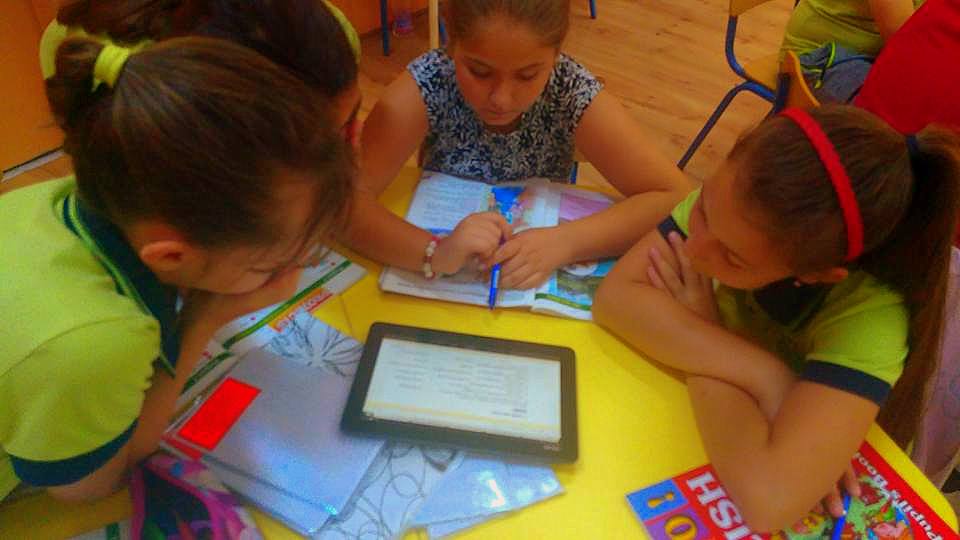Rositsa Mineva’s English-as-a-second-language classroom does not feature rows of desks. Instead, portable modular tables offer flexibility in classroom layout, and seating can be rearranged to suit the class activity for the day. Sometimes tasks require group work or work in pairs, and sometimes students do research on their own. Being flexible is important when it comes to nurturing a creative, individual approach to problem solving, Rositsa says.

When the class does a running dictation, for example, the tables are arranged in a semicircle to give the runners easy access to a text sheet taped to the whiteboard. Students work in pairs: a runner makes frequent trips to the whiteboard, memorizes a part of the text, and then dictates it to his teammate, who must reproduce it on paper as accurately as possible. Unlike the unpopular traditional dictation, where seated students write down a text read out loud by the teacher, the “running” version is an effective and stimulating way to practice reading comprehension, writing, and teamwork.
As the workplace of the future changes (and moves!)—a cafeteria table, an airport departure hall, and a corner of your living room can all be transformed into an “office”—it is extremely important that children learn to be flexible, says Rositsa, who applies this philosophy in her second- and fourth-grade English classes at the Mityo Stanev Primary School in Stara Zagora. Adaptable classroom layouts also allow learners to lead the learning process, taking the steps necessary for them to solve a given task.
The model in which a teacher-lecturer delivers information to student-listeners, who are assessed according to their ability to reproduce it, comes up short in today’s day and age, Rositsa says. The model worked 100 years ago when the teacher’s job was to prepare farmers and factory workers. Today, automation has replaced human labor in agriculture and industry. So, to prepare their students for the jobs of the future, teachers need to help them develop new skills, such as adaptability, teamwork, communication, and critical thinking, that enable them to thrive in a rapidly changing work environment. A modern teacher must become a coach—one who adapts the learning material to students’ needs and stimulates their individual abilities.
Rositsa has spent many years moving classroom furniture around and “redesigning” the learning process to customize it to the needs of 21st-century students. Her students search for and interpret information on their own, work with tablets and mobile applications, create multimedia content, and learn by competing against one another. Whether they are working alone or in groups, doing tests or homework, Rositsa is invariably there, supporting them in their learning. She creates electronic books and videos for her students to practice their pronunciation and do grammar exercises, and she never fails to leave an encouraging comment about recordings of their reading or projects they upload to the class’s electronic portfolio. Many of Rositsa’s lessons take the form of games or competitions. By helping her students create their first blogs, she introduces them to the Internet and teaches them about proper online behavior.

Rositsa maintains several professional blogs, where she generously shares interesting information about current trends and good practices in education as well as the learning aids she creates for her own students. She participates in education and training forums on a regular basis. In 2015, she took part in ABF’s Education Leaders’ Training Program, which took her to New York City for three weeks of training, and has been an active member of the ABF community ever since. Last year, she was a mentor in ABF’s Education Leadership Academy. This year, the ministry of education named her school an Innovation School thanks to Rositsa and her coworkers’ efforts.
Committed teaching takes time and frequently happens at the expense of free time, says Rositsa, who often stays up late preparing lessons for the week or translating interesting articles about education. “I enjoy doing it and I’m motivated, too, because I know it’s useful for my students,” she says.

